- Home
- >
- Preservation Archaeology Blog
- >
- Doing It Awl

(June 14, 2022)—One must-have in the field is a good hat with a wide brim and a strap to keep it from flying off your head. Knowing this, I brought one beat-up straw hat for the field and one brown felt one for trips to town. I had always wanted to punch some holes and add a strap to the latter because it is quite a nice hat.
I finally was inspired to go through with this project when, in the first week of digging in our unit, my crew uncovered a fragment of a bone awl, likely made from a ground deer rib bone. People would have used it for weaving or other textile work some 700 years ago.
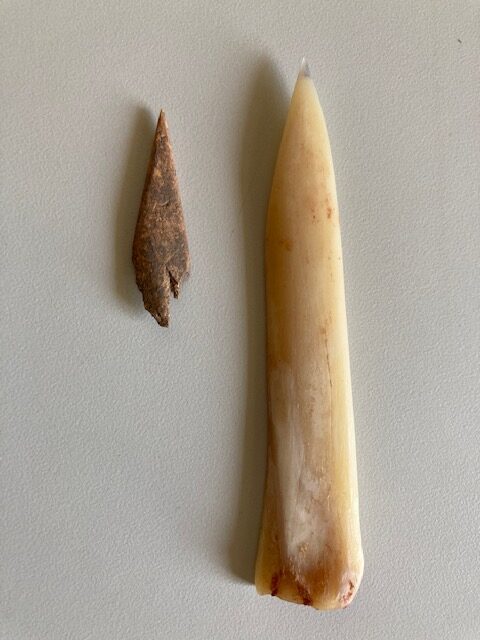
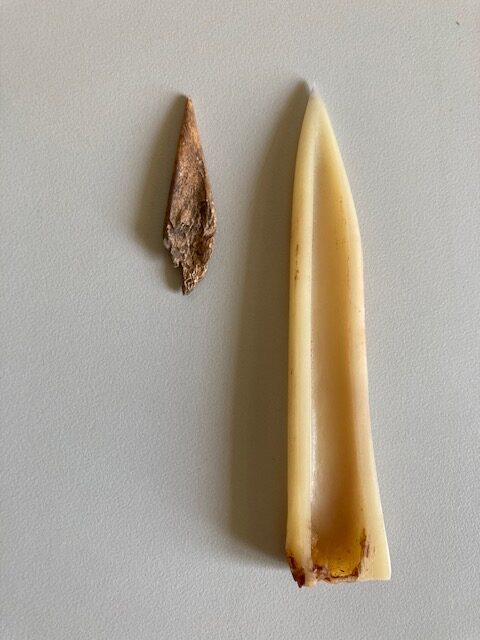
So, with help from Allen Denoyer, I fashioned an awl of my own from a deer metacarpal.
I first incised a line in the bone with a stone blade, then further defined it with a flake so I could easily snap it in half at the best angle for making the sharp point I needed.
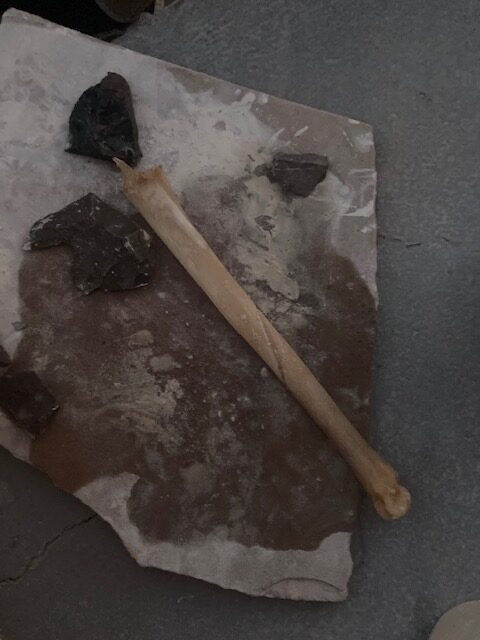
Next, I ground the bone on sandstone to shape and sharpen it; this entire process took roughly 3 hours.
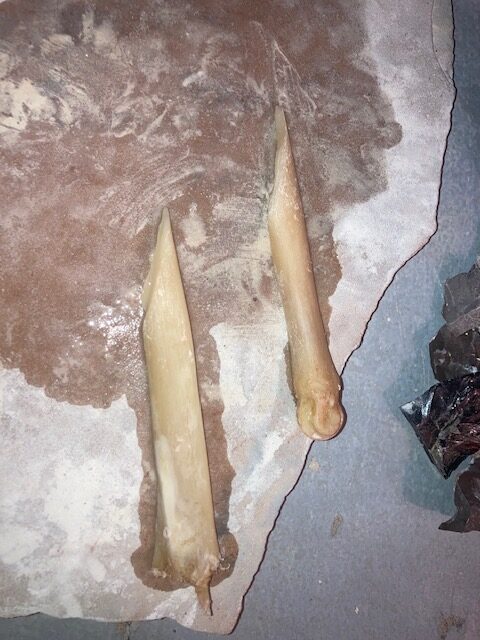
Then I cut a strip of leather from a hide—cheating with scissors to avoid wasting material. The bone tip pierced the felt easily and impressively, leaving a perfect hole for the leather to be pushed through with the awl’s tip.
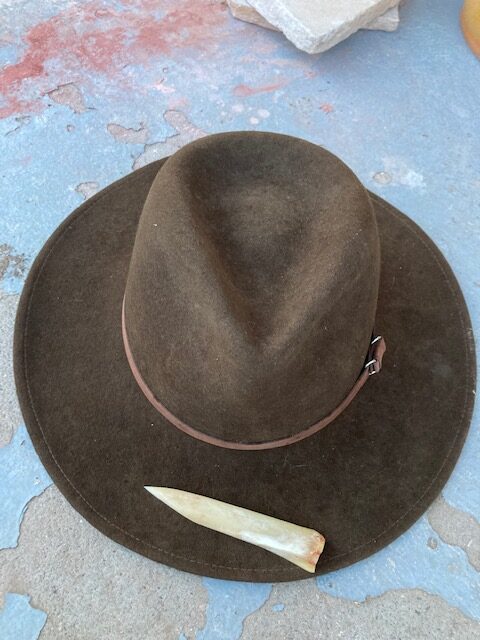
I realized I needed to be able to adjust the tightness of this new strap before I tied the knot, so I grabbed some soapstone and ground it into an irregular pendant using the sandstone and a chalcedony drill, strung the bead onto both ends of the leather strip, and tied the knot.
I’m quite pleased with how it turned out. The hat is clearly mine, complete with personal touches, and I can use it in the field.
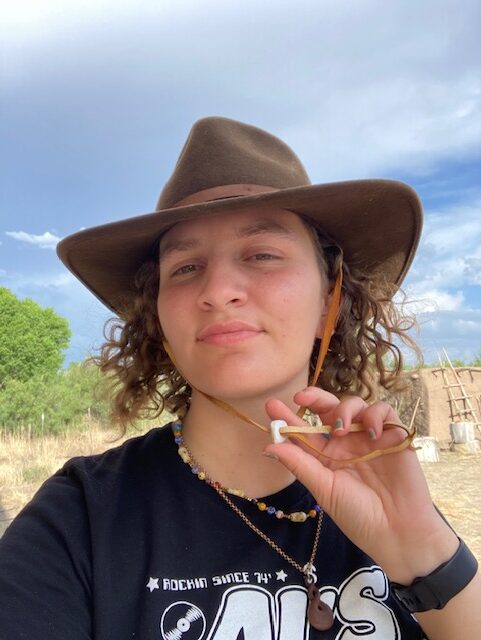
Thinking about how my awl and the awl from the site were utilized for similar processes long ago had me thinking about how many hands would be involved with all the objects we find and study. Just making an awl involves many steps and many people—the hunter who provided the bone (and the hide for my hat strap), the gatherer who harvested plant material to weave and the rocks to work into tools, the craftsmen who made the stone knives and drills. I wonder if this could be done by one (very busy) person, one family, one community, or if it was several communities connected through trade and kinship.
The awl speaks to relationships people had with their tools, their environment, and one another. From beginning to end, the process of creating any one artifact reflects a complex world where one person alone could not simply do it awl.
2 thoughts on “Doing It Awl”
Comments are closed.
Explore the News
-
Join Today
Keep up with the latest discoveries in southwestern archaeology. Join today, and receive Archaeology Southwest Magazine, among other member benefits.
Very nice. Good to see you making something useful for the work you are doing. May you wear that hat until it’s battered and worn, representing you and many years of work in the sun and the field.
Good writing, and very relatable.